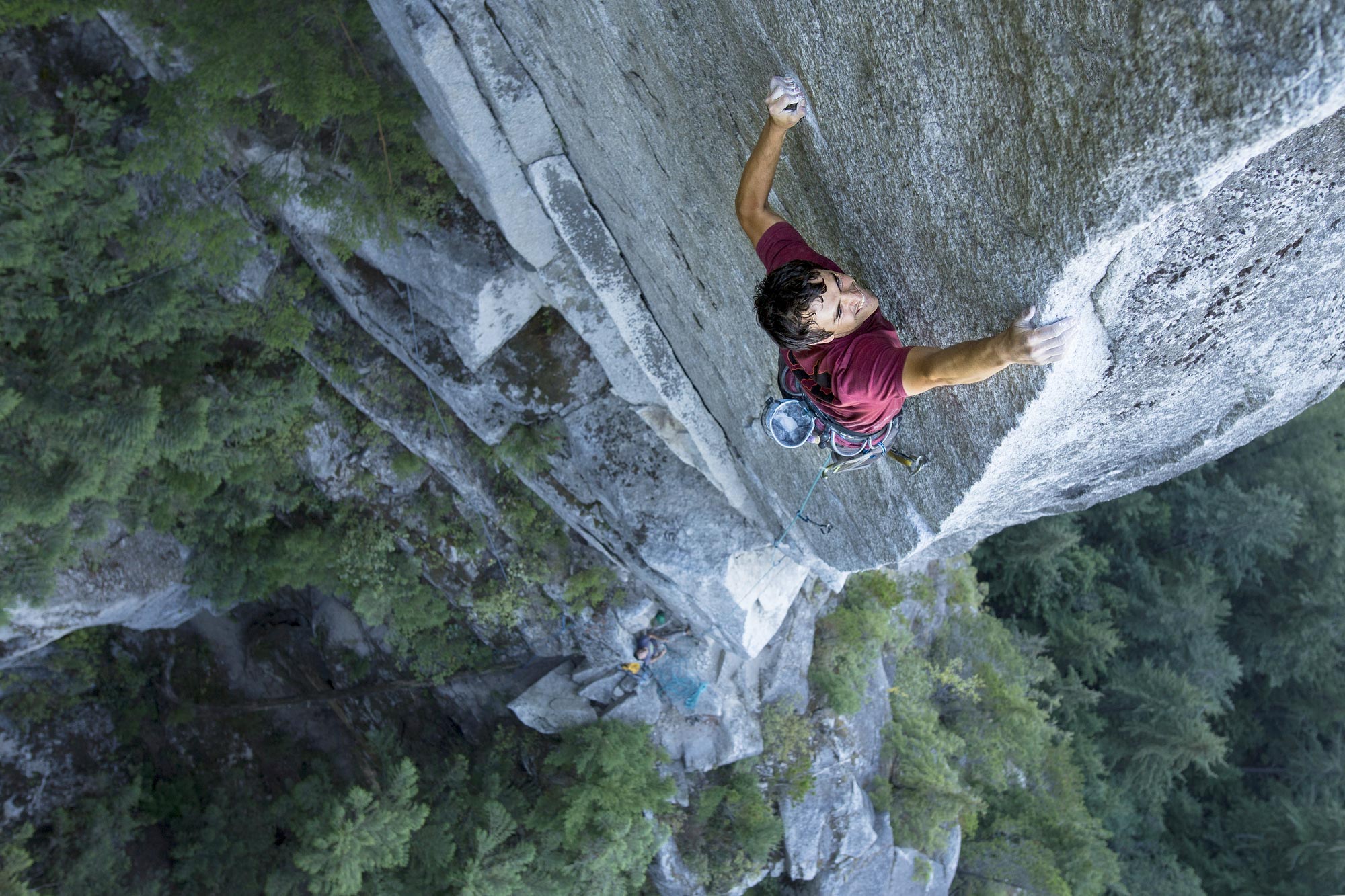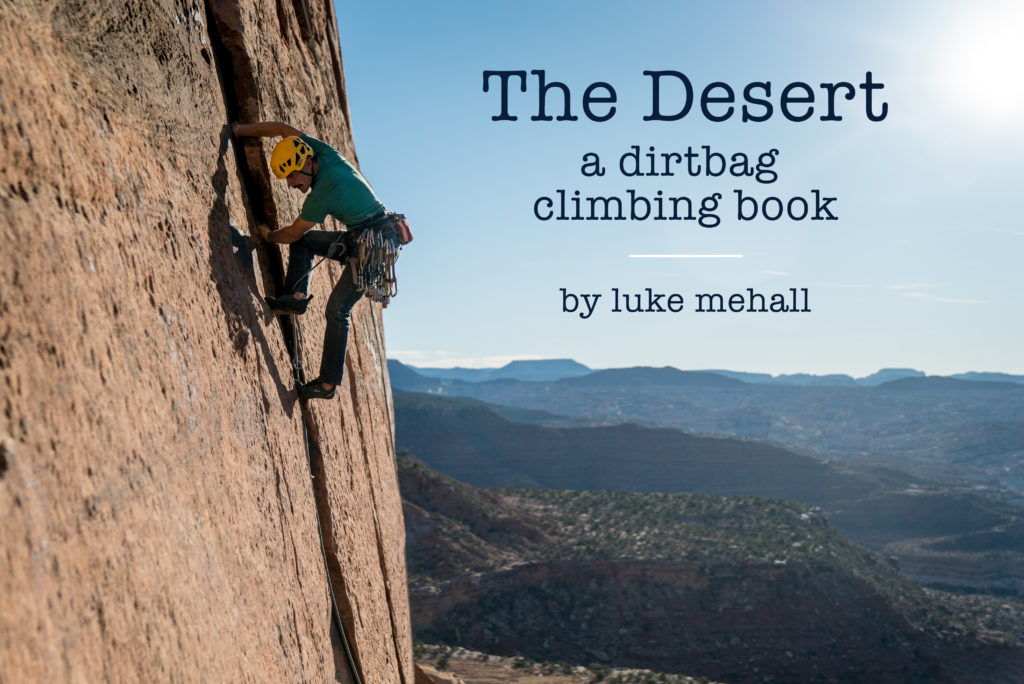This piece is published in Volume 18, now available to order. You can read Part 1 of the story here. Banner photo of the late Gobright by Dan Krauss.
Fast-forward a handful of years and a lifetime of memorable ascents later, and Brad is home in Southern California for the summer to earn a few extra bucks while the weather is hot. I caught up with him at the local gym, where on this day—as opposed to ten years ago when his peers would heckle him—the entire place went quiet when he climbed. There was even a kid who asked for his autograph when I lowered him off his first climb. He couldn’t have been more than ten years old and was as shy as you could possibly imagine. When the boy was timid on the ask, his father nudged him to say a few words, but the youngster rolled his shoulder into an inflated ball and hid under his dad’s wing. Having worked with kids at the gym for years, Brad eased the anxiety with a brief hug and posed for a photo. It’s a brave new world. Brad Gobright is the stuff of dreams.
A moment later, after wrestling with a harder grade, I asked, “You ever think about route setting yourself, while you’re home?”
“No way, dude,” Brad replied. “I’d be absolutely terrible at it. For a fact. I’m definitely more in my element with kids, goofing around.”
Which is true. Compared to my experience with other high-level athletes across the disciplines, Brad has a really low register for his own biomechanics. Keeping track of his own movement patterns, let alone constructing them for others, is admittedly out of his league.
For all the things he’s done, especially in the realm of soloing, where mistakes wager in life sentences, he’s not exactly tuned in. He has a hard time describing experiences of his body as much as experiences of his mind. If you ask him about the tension in his body while navigating a crux, he can tell you what he did with each limb from points A through C, but he can’t necessarily tell you how. The experience gets away from him. Which isn’t to say he doesn’t have it. I’m sure that he does. In fact, when he gets to the crux, you see it. When he isn’t getting as much back from a rest as he’d like, you see him move into a new position. He does make adjustments; he makes mental connections in the moment to physical positions and takes the appropriate actions. It’s just that he doesn’t necessarily catalogue them. The nature of his programming is to run the functions, not to run analytics.
When Brad and I last shared a meal in Squamish, he’d just recovered from the first of his career detours, a broken back. He’d come by for dinner with his girlfriend at the time, and we discussed his thoughts on soloing after his injury.
“I had a freak out the other day, and I’m really not sure what caused it,” he began. “I was completely fine on the route, but I dunno what happened. I’ve never had any feelings like that, you know, real nerves.”
He later described it as a response to the exposure. Even though he was fit for the climb, just the idea of another backbreaker and the recovery process caused his body to shut down. Still, as he reflected, it wasn’t as much a fear of dying he was experiencing, but a reaction to the sudden exposure. A flashback. A surprising reminder that he was a little human, after all.
Now that it’s been a few years, I asked him if he’s had any similar experiences since then, because I think most people are curious about the process of fear management altogether.
“No way,” he quickly responded.
“What about fear in general? How often do you feel afraid up there when you climb? Not afraid to fail ’cause you aren’t sending, but afraid, like actually scared to be just where you are?” I asked.
“Not at all,” he offered.
“Never while soloing?”
“I don’t think so.” He shrugged.
Brad is honest, so it was obvious he wasn’t saying this to sound bold. In fact, if you ask him, he’s not that bold at all. His core drive is to climb, so in his mind, he’s always on the right side of the risk-and-reward curve. Others might hesitate to do something in the sport because it could mean losing family or functionality in some other part of life deemed more valuable. But for Brad, climbing is the function, and he doesn’t want to do anything that might risk not being able to continue climbing. Even at what appears to us as his most extreme.
“Yeah, I just never really get gripped up there. Never have when soloing. I mean, I’ve been nervous and had some anxiety before doing something, but once I’m off and moving, I don’t think it’s fear I feel. That would be bad,” he finishes.
He must have some internal bearing, though, like the rest of us do. That feeling that talks us off certain climbs and away from certain risks. We’ve all got climbs we haven’t done, for reasons that are usually more a mystery to us than they are apparent. Times when it just didn’t feel right.
“What about last year?” I asked. “What about that day when you bailed on the Half Dome solo?”
He’d planned an all-means solo, free climbing most of it but also clipping bolts at a few crux points and common pendulums.
“Oh, that day.” Brad’s cheeks puttered. “That day, I don’t know.”
He struggled for a moment, going deep to explain, then came right back to the surface. “I don’t really know what happened that day, but I’ll tell you what. It’s a really good thing I didn’t go solo it ’cause I would’ve had to call some friends for a rescue. You know, after that big rockfall a few years ago, some guys went up there and put up a new bolt ladder, but I guess those things are sketch, at best.” He finished with a look of fright.
“I mean, it’s only been a couple years, and rumor has it those bolts are already sticking out a quarter inch and ready to pop. No way I would’ve trusted my life to one of those things!” Brad paused. “So yeah, it would’ve been a pretty epic bail.”
“Come on, Brad,” I asked further. “You’re telling me that was it? I’ve got tons of climbs I haven’t done, and we both know guys who have them too. Stuff that just didn’t feel right for one reason or another. Stuff where you wanted to do it, you really did. But when you woke up that morning or when you hiked into it, you just had a deeper feeling that took you away from it. You don’t think you had something like that happen that day? You don’t think you had something deeper protecting you from going into that situation?”
Brad paused for a moment and finally conceded. “I guess you’re right. I did have a really good spring, and I wanted to end it with a bang last year. But every time I was going to do it, something just wasn’t right. I’m not sure what that was, exactly, but I can see what you’re saying. It could’ve been a deeper voice.”
Maybe that’s as good as he needs it to be. And I shouldn’t insist otherwise. Most climbers I’ve known who have that deeper voice, or compass, really make it a priority to look for it before each climb. Most of us want to find that voice and get practiced in how to hear it as often as possible. Brad, to no surprise, might just feel that it’s there when it needs to be, and beyond that, he doesn’t need to figure it out—beyond that, nothing needs explanation. And that is his remarkable Zen.
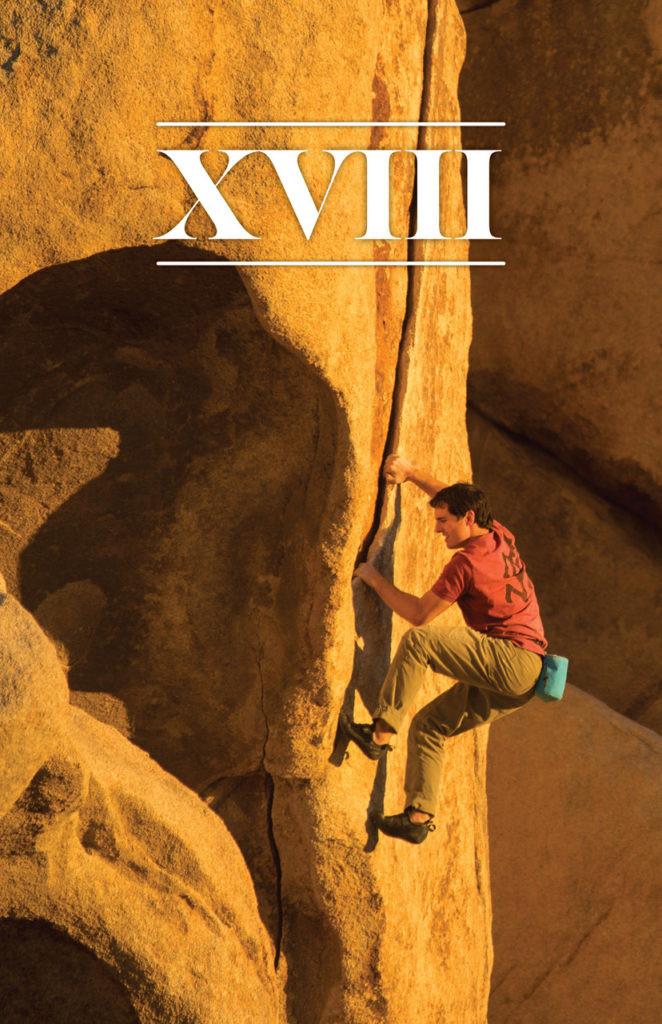
He is aware of danger all the same. Not too long ago, he repeated Indian Creek’s Carbondale Short Bus, first climbed free by Hayden Kennedy—with the use of preplaced gear on the critical opening sequence. A perfect example of why, to him, he’s not that bold, nor does he take risks that would disable him from that core drive to climb free. He’ll free solo terrain that would make most of us quiver, but on the same coin, he’ll insist to preplace gear if a ground fall looks possible.
A moment later, as we look over to the bouldering area, Brad notes the position of a crash pad and shakes his head with worry. “Dude, that pad placement, that’s super dangerous. Total ankle breaker.” It’s a funny outlook considering his total sense of cool after having just discussed nearly a decade of soloing in the death zone.
A lot of what he’s done in climbing has that feel of paradox. When you ask him about speed climbing El Cap, he’ll just tell you that it sprung from his first experience on it. Recall that the first time he ever climbed it, it was in a day; and it wasn’t because he read Largo’s article about the 1974 excursion with Bridwell and Westbay and felt inspired, but because he really hates hauling systems and haul bags. Admittedly, he’s terrible at rigging. And for Brad, any big wall that takes days is, to him, much harder than a climb that takes only one. That simple. It’s not the history books he’s after when it all comes clean—it’s simply climbing.
For some, the greatest experiences found in climbing come down to partnerships, to who you are with regardless of what you are doing. The powerful moments of exposure on physical and emotional heights can bring out an expanded capacity to work for a greater good, for something more corporate, above the individual. For some, the entire outside life is fashioned as much for an experience with another human as with nature itself.
Admittedly, Brad’s never been great with relationships, and that’s not a fault—it just is. Lately though, he’s moved the needle, a little. In his hardest ascents and fastest climbs, near his limitations, he’s understood that he has a need for others. Little by little, it seems, he’s finding as much joy in the company of others as in the company of the high planes. It’s not a strong suit, yet, but it’s certainly in process.
“What about friendships, mate?” I proposed. “Any blooming relationships up there on the wall? People who you just want to experience any climb with, no matter the grade? Any relationships that are made richer simply by sharing the rope?”
Brad ruffled his cheeks in an effort to stall. “I guess so. But I mean, there’s always an objective too. So maybe the climbing is always coming first.” Then just a moment later, “I guess I’ve got some friendships that are cool though.”
“So, when you talk about moving back to Boulder next summer, is that ’cause there are people you want to see? Friends you miss and want to get closer to?”
After another pause, he came clean. “Not really. I mean, there’re people I’d like to see, but I also think I’d just want to go back for the summer to climb a lot of stuff too.”
It’s understandable. I don’t think he’s in tension about it, but I think he’s also learning that there’s a part of the human experience that he can access, a level of interaction with others that isn’t based on doing things together as much as just being with each other. For Brad, growing up, the lack of articulation skills made it hard to navigate social endeavors, and for all his strength as a kid in the climbing gym, he never really came into an outfit. He didn’t gel on a youth team, and he wasn’t all too interested in competitions, sport climbing, or bouldering as ends unto themselves either. You wouldn’t call it hazing, but in a lot of ways the flimsy swings and bad footwork that got him up climbs in the early days made him more jester than knight. People laughed at him, but they loved him too.
“Fair enough,”I continued. “And what about women? Do find yourself longing for anything more committed since you’ve been single for a while?”
“Not really. I don’t really think it’s a good time for something like that, because I’m just way too into climbing. I think I learned that from the last relationship.” He briefly struggles to find his words, then continues, “She wanted to plug in to society and still climb and stuff, you know, but her focus was more wholesome than mine. I think we both realized it wasn’t going to be a good thing for us to do long term. The good news is we’re still friends and everything.”
Brad might not need intimacy as we’ve just discussed it, and if he’s honest, he probably doesn’t really get how the whole thing is supposed to work. Few do. But, what he does get, suddenly, is an inspired look on his face, which leads him to open up further. He’s got an almost-sinister grin and the look of a kid about to share his favorite secret on the hush.
“I’ll tell you what. I did briefly get on that Tinder thing lately. And man, that’s a weird way to meet people if you ask me. Girls these days are pretty forward out there.”
He smirks like he’s living in a flickered memory on repeat, then continues, “Wanna know something even weirder? In Yosemite Valley, right now, a lot of people are using it, and it’s kinda wild. Climbers and tourists.”
“Wait a minute, Brad! You’re telling me that right now, or on any given day during the high season in the Valley when thousands of tourists are in bumper-to-bumper traffic, that a whole flock of them are on Tinder, parking at the nearest spot off the road and just running into the meadows or the forest for a fucking shag?”
“Bro”—he laughs out loud—“you can’t even imagine the stuff I’ve seen out there lately. It’s everywhere!”
Let’s not forget we began this discussion looking for intimacy and connection, and now we’re buck naked in Yosemite having unprotected sex. But, that’s Brad. Right on the surface, exactly where he’s best designed.
Most have a hard time digesting Brad’s simplicity in the face of his experience. For all his efforts, especially in soloing where his level of execution must be finer than a Michelin-star kitchen, popular belief is that he must operate—not only on a wall but on the everyday activity—from a plane of excellence. We demand that it be so. When we come to find he floats lighter than a newborn, and in similar streams of consciousness, it is we who find ourselves confounded, not Brad.
Among other feats, he’s arguably most famed for his soloing efforts on Eldorado Canyon’s Hairstyles and Attitudes. The nature of the climbing style, the insecurity of it, the sequential detail of the crux moves, the near impossibility of reversing any of them—and thus the commitment level—have made it a solo for the ages. Even in the wake of Honnold’s Freerider solo, the sheer improbability of Hairstyles as a solo climb will probably keep it in the annals of Western rock ascent.
It was profound enough that, when Hayden Kennedy remarked about it in a B side cut of Cedar Wright’s Safety Third film, he spoke of it with reverence and likened the entire experience to an enlightenment.
“Whatever was meant for Brad to have in that moment was meant for Brad alone,” Hayden said.
It’s not even that anyone can have that experience, but that that experience may have only ever been meant for Brad, alone. It’s not as tall or sustained as El Cap, sure, but it’s quite possibly just as singular a human experience. For no one else, perhaps ever. That profound.
“Hayden said that your experience up there might have been meant only for you, and that whatever it is that you got up there, that it must have been special.” I looked at Brad and asked, “So, what was the experience like for you? What did you find?”
In a most typical short and inspired fashion, Brad probed into the recesses of his mind, looking to read from the teleprompter. When it ran blank and without text, he just smiled for a moment, almost as if he’d taken flight again, unhampered by the weight of such an achievement or the need to explain anything about it. Whatever the Hairstyles experience had provided him had long since left, if it was ever anything he’d attempted to hang on to anyway.
“Um, you know…I’m really not sure. I just knew I could do it, and I always wanted to.”
He didn’t do it just to say he’d done it. He just did it. The only qualifier, a certain knowledge he could. He didn’t want what was on top. He wasn’t after a revelation, and he wasn’t running away from anything looking for a solution. It wasn’t going to solve a life problem or make anything better. He didn’t want to be known as the guy who did it. It was literally just a thought that came onto his radar without any check against it. No voice telling him otherwise. Nothing to analyze. It really doesn’t matter in the feedback loop of Brad’s programming, because after all, there is no origin, only operation.
You want it to be so much more; you want a feat like this to traverse the infinite plane and lead to the divine. You want to look inside the formula and find the perfect expression. But the simplicity, the honesty, the perfect, unaffected level of naïveté, that comes through his blue eyes when he looks at you, is really just as good.
Brad Gobright is pure of heart. So pure in fact, that he may never have faced a dilemma in all his life. What to do and when to do it? Who to become and how to go about it? What are the designs needed to construct the life you want to live, and how do you even draw them? If anything, it is we who have suffered his decisions, more than he has. That he’s never been in any form of tension with his course in life begs explanation. That we can’t seem to carry on with ours until he qualifies his begs our own. He is a Zen koan, placed in this world to reframe our concepts completely. Indeed, just how we see Brad seems to say more about who we are than who he is.
You want him to be brilliant. But he’s happy. You want him to be multifaceted, but he runs perfectly as is. He is not what you want him to be, nor is he trying not to be, he just is. Zazen.
Of all the characters in the lore of Western climbing history, of all the heroes and the heroines, the maniacs and misfits, one could hardly script Brad’s character. The madman and the obsessed we’ve seen; in our tradition they are, in fact, a dime a dozen. The willingness to sacrifice anything and any relationship, those who quarrel about ethics, those who burn bridges and craft a life so self-centered it will abandon all for glory. Those who are coded by a pure obsession for a summit, for notoriety, for an achievement or even a feeling of peace in an otherwise chaotic world, we can understand. We’ve seen the type. Even if they fail to ride that most fine line, even if they fail as fathers or sons or daughters, for the places they take us, for how they lift the human spirit, we are willing to call them heroes of some kind.
Even when they face a tragic end, we consolidate their memory, as one would with an addict of any type, suggesting to ourselves that our heroes were indeed good people, making the best of a condition not of their choosing. We think that when they knowingly pursued summits over simpler obligations, they did so not because they wanted to, but because they were compelled to. We say, it made them the happiest, to be doing X, Y, or Z, and how could we ever ask of them to be otherwise. But momentary happiness is not our entire expression. That happiness, the kind that is attached to achievements, is always unsustainable. Usually, nobody knows that more than the hero who finds, at last, more emptiness after the fanfare of each ascent. But ask any recovered person about real happiness, and they’ll tell you it only ever came when it was given away.
Brad really is different. Same look. But different. He’s never had that dilemma. He’s never tried to juggle capacities. He’s never run counterintuitive functions. At first that can seem basic, almost one dimensional, but looking closer, temper the judgment and you’ll see that his character is, in a most Eastern aspect, perfect. Fully reduced, nothing to add and nothing more to possibly subtract. Pure. Realized not with prose and pomp but with action. He flashes before your eyes, and if you are too busy looking at the incident—which is his manner of living itself—you’ll miss that flicker of brilliance.
If it’s hard to close a box around, if his humanity seems just too far to grab, hold to this: He does believe in beauty and all that it promises us. It might be the one thing that supersedes his whole drive. The one thing that can put a pause on the feedback loop. The one thing that will freeze action. As he described it to me, the one thing that can make him stop what he’s doing and just look around with total wonder. In the middle of a twenty-four-hour day on the stone, somewhere deep on a trail after some ungodly link-up, even if he’s going for a speed record or trying to rush out of the tent at daybreak, even if he’s got an agenda for something that seems pressing—when a beam of nature is suddenly lighting up the empty corridors of that unconflicted mind, beauty will overwhelm him. He’ll stop; he’ll be raptured with the same rush of love and incomprehensible glory as you will.
“I definitely think that climbing El Cap, just being on it at sunrise or sunset, is the most beautiful thing I can do in my life. It’s the most beautiful rock out there. And there have been times on it where the sky is so perfect, I can’t imagine anything else. For me, that’s it. I’ve had it happen all over in nature, when I get completely frozen by something beautiful, but it happens to me the most on the Captain. I can climb all over the world, but I don’t think anything will beat it. It’s just the most beautiful thing I’ve ever seen.”
That’s it. That’s what’s up there. Beauty. There isn’t so much a “why” to his action. There never was with Brad. It’s not in his nature to ask why he has the drive. He just runs it. Beauty is up on that rock, and so is Brad. He’s not going to take our aspirations up there with him. Lord knows he’s not carrying any form of science or philosophy into that experience each time he goes. He is taking the only thing he has and the only thing he’s ever needed—that pure heart.
As hard as it was, at times, to watch him live, it’s much harder to know he’s gone. It is terrible on context, terrible on condition of how it happened, and terrible on timing, as it always seems to be with loss. Brad was on an arc after all. He’d grown, and was growing, in a lot of new capacities, and we could all see it. Some of us had been on that arc with him longer than others, but the truth is it doesn’t matter where we were on it—it just matters that we were there. It matters that we can keep him and all his indelible, robust, comical, and even gentle aspects alive in memory.
He’ll be missed for so many things—the million or more quirky details, the mimes and the sarcasm, the infamous chicken bock at the tourons, the jokes and the laughs he provided. He’ll be missed for all the superlative measures we kept record of him by. Those blanks, those frames are scripts we all get to fill in, with our own stories of him. But he’ll be missed for so much more than his lightness and his amusement. He’ll be missed for his singleness of heart, for his honesty, his authenticity. For all the things we struggled to consolidate about him, for all the things that made him him. That’s what we’ll miss the most.
We’re all going to have that last text, that last phone call, that last hug, that last beer, or that last climb we shared with him. Those painfully close will have that last I love you. Painful as they may be, those are priceless memories, and we should nurture them. Grief is a force of nature, a part of the cycle we must submit ourselves to. It does not get solved, it is not a matter of logic, and there’s nothing pretty on face value with it. Grief simply must be had. But, grief is of nature too, and for that it is good. It is good because it keeps us together. Let’s remember all those sunspots Brad burned on our reels when he was flying through the frames. Let us play them back, honor them, celebrate them. They were real; they were special; they were once in a lifetime.
To me, he had it. When you are known as much for your failures as your successes, as much for the falls you take as the summits you make, you’re onto something. That’s my image of him. Brad Gobright, up there looking the fool, could be an epic fail or his greatest ascent, it doesn’t matter because he’s shining just the same. That same light we’re all shielding our eyes from as we find ourselves looking on from below is the one he’s wrapped in.
Radiant, fleeting, glorious. Light.
Lucas Roman is a nursing student who writes for his partner, Nathalie, his friend Jeremy, and the last of the red-hot lovers. This piece, and others, will be featured in a collection of short stories, titled, Likeness; Ad Infinitum, to be published by Di Angelo Publications in 2021.
Dig the words? Keep the dream alive by subscribing to The Climbing Zine. It’s $24.99 a year for three issues, and $39.99 for two years (six issues).
We have also now have a podcast, called Dirtbag State of Mind.
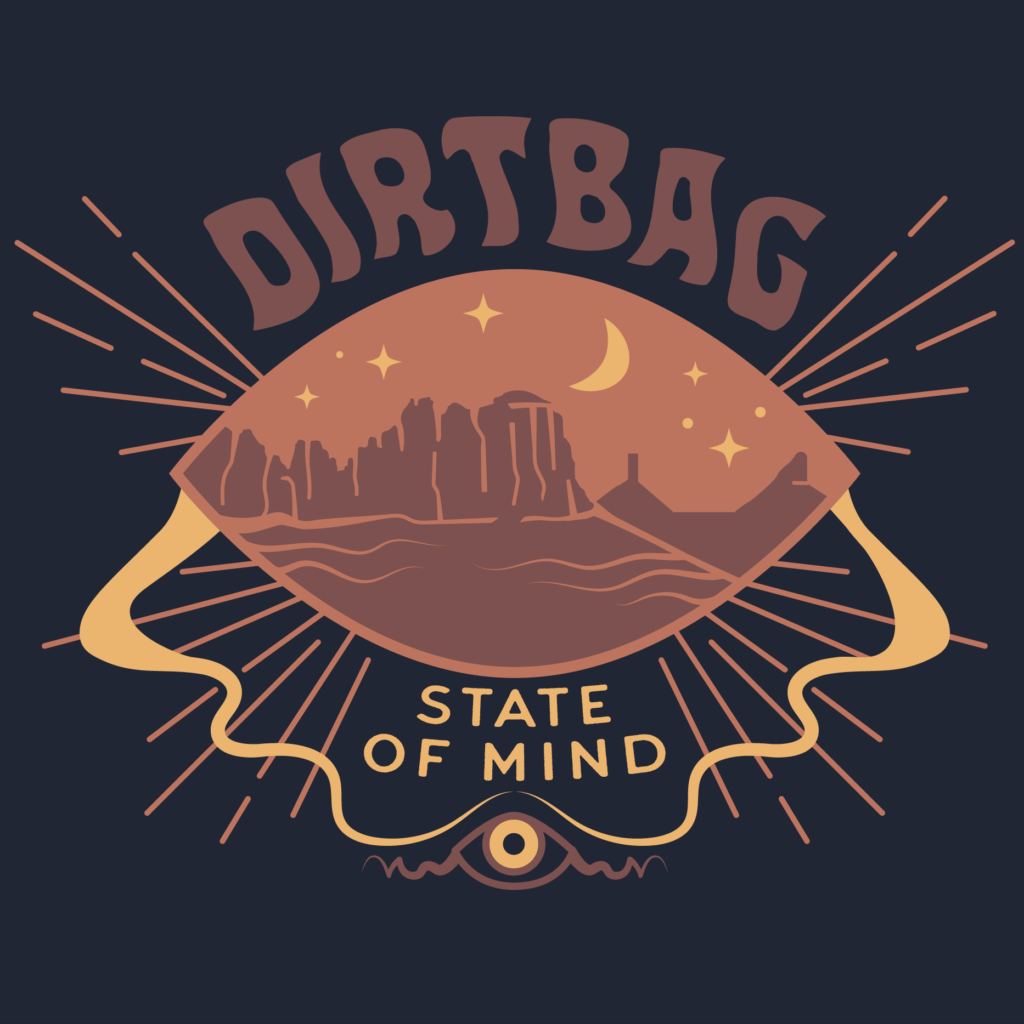
About us: The Climbing Zine was started in 2010 by Al Smith III and Luke Mehall. It continues to the day with the mission of representing the true essence of climbing. Our crown jewel is our printed version, but we also do the interweb thing, and Kindle.
We have also published seven books: The Desert, Graduating From College Me, American Climber, The Great American Dirtbags , Climbing Out of Bed, The Climbing Zine Book and Squeak Goes Climbing In Yosemite National Park (a climbing children’s book) .
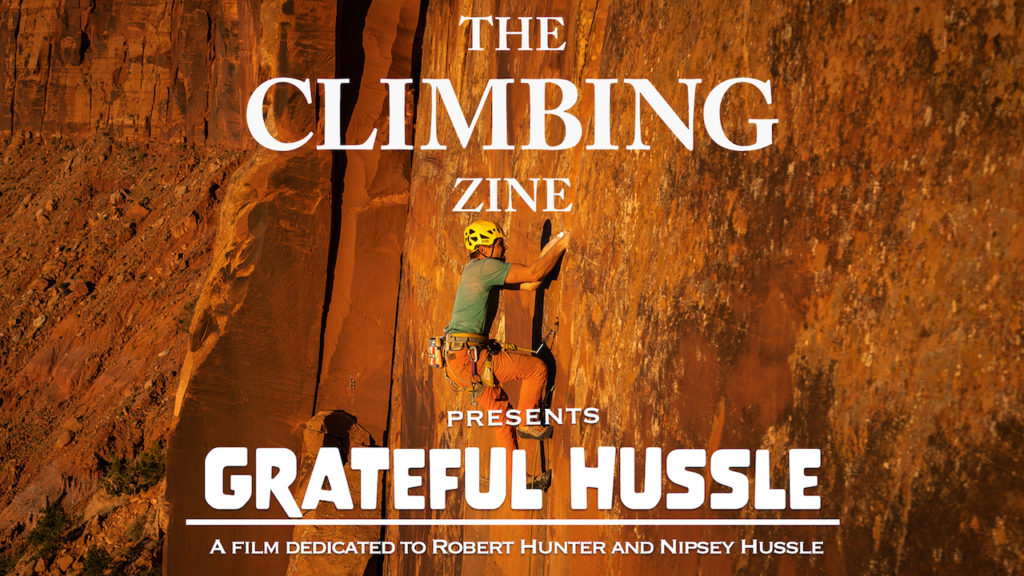
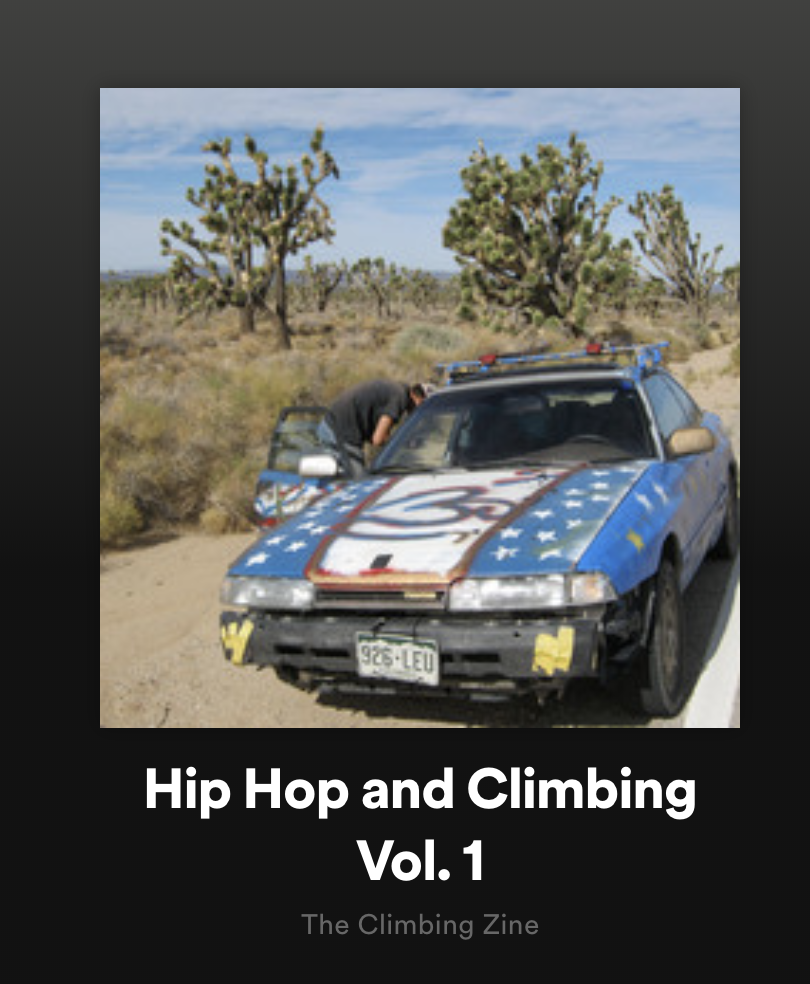
Also: listen to our curated playlist: Hip Hop and Climbing Vol. 1, now on Spotify.

